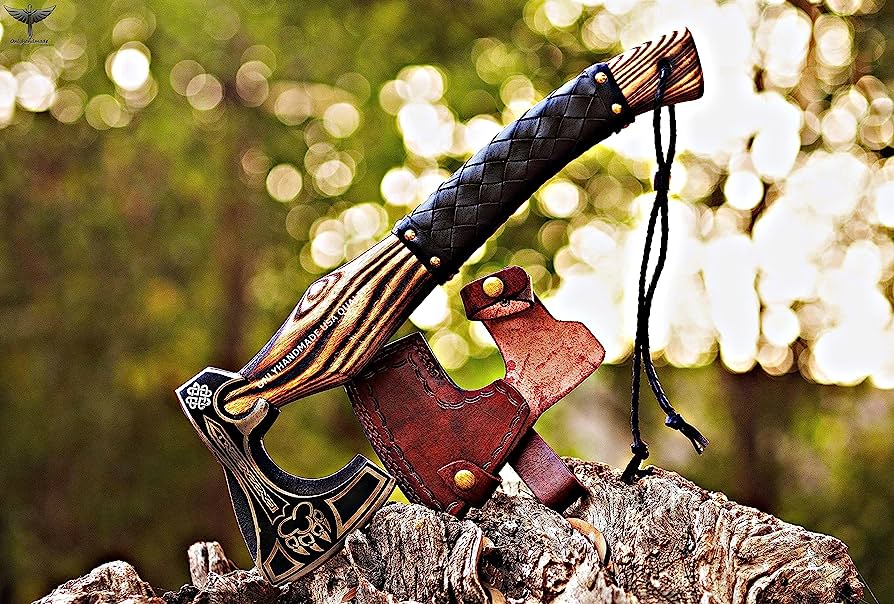Beyond the Battlefield: The Surprising Versatility of the Viking Axe
In popular culture, the Viking axe is often associated solely with the image of a fierce warrior on the battlefield, wielding the weapon with deadly precision. However, beyond its role as a fearsome weapon of war, the Viking axe displayed a surprising versatility that permeated various aspects of Norse society. From daily tasks to rituals and craftsmanship, the axe was an essential tool that played a pivotal role in shaping Viking culture. In Viking households, the axe served as a multi-functional tool, proving indispensable in everyday chores. Its sharp blade was used for cutting wood, making it an ideal implement for construction and firewood preparation. The axehead’s weight and design allowed it to be used as a makeshift hammer, facilitating the creation and repair of various items around the household. Additionally, it was employed in agriculture, assisting in planting, harvesting, and even slaughtering animals for food. Its widespread application made the Viking axe an integral part of domestic life, reflecting its importance in ensuring the survival and prosperity of Norse communities.

Beyond utilitarian purposes, the Viking axe held significant cultural and ritualistic value. In Norse mythology, axes were associated with gods such as Thor, the mighty god of thunder and lightning, which was often, depicted wielding a powerful, enchanted axe known as Mjölnir. Axes were also symbols of protection, and their presence during religious ceremonies and rituals was believed to safeguard participants from malevolent spirits and hostile forces. In burial rites, prominent individuals were often interred with their axes as a symbol of their valor and status, indicating that the weapon held spiritual significance and ensured safe passage to the afterlife. The skillful craftsmanship of the Viking axe was a testament to the artistic talents of the Norse people. Blacksmiths and metalworkers dedicated themselves to honing their axe-making techniques, resulting in exquisitely designed axes that were as much a work of art as they were functional tools. These axes were often adorned with intricate carvings and engravings, each telling a unique story of the weapon’s owner, their ancestry, and the legendary feats associated with their lineage. As a result, the Viking axe became a cherished heirloom, passed down from generation to generation, preserving both family heritage and the rich history of the weapon itself.
Furthermore, the vikingská sekera played a critical role in the Norse expansion and exploration. As the Vikings voyaged across oceans and rivers, their axes were essential for shipbuilding, enabling the construction of their iconic longships. With these sturdy vessels at their disposal, Vikings could navigate vast distances and establish settlements in far-flung lands, leaving an indelible mark on world history. The Viking axe’s surprising versatility goes far beyond its reputation as a fearsome weapon of war. It served as an indispensable tool in daily life, a symbol of cultural and religious significance, a showcase of exquisite craftsmanship, and a driving force behind the Vikings’ legendary voyages of exploration. This multi-faceted and enduring implement continues to fascinate archaeologists, historians, and enthusiasts alike, reminding us of the remarkable legacy left by the Vikings and their iconic axe.